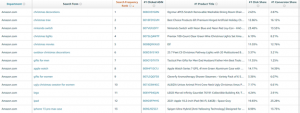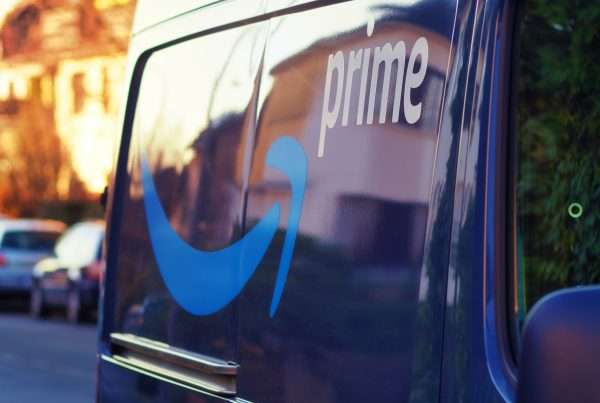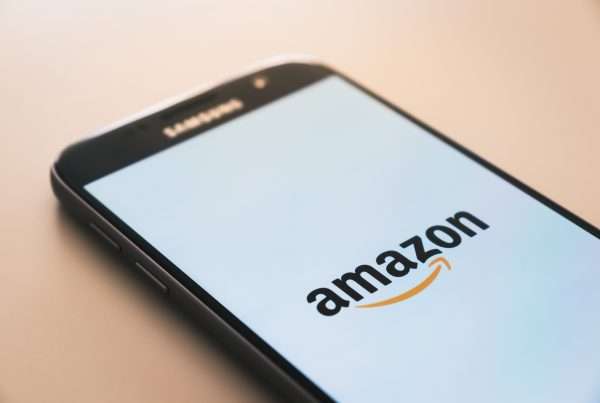By Nat Almirall, Adina Cruz, & Alex Kiriazis
If you are reading this article, there’s a good chance you have a product on Amazon that isn’t ranking as high as you would hope, either for a particular keyword or category. The reality is Amazon demands perfection from its sellers. If just one thing isn’t optimized, both on the organic and advertising front, it’s nearly impossible to claim the top spot in the search results. And even if you have flawless product detail pages (PDPs) and ads, Amazon may default to the product with the most sales and positive reviews. It’s not necessarily worth getting hung up on an Amazon Best Seller ranking ahead of you, but you should always be striving to perfectly optimize your products to give them the greatest chance of ranking as high as possible at all times.
While you may not want to immediately expect to be on top, it’s definitely worth knowing where you rank for certain keywords. The best way to find this information is in the Brand Analytics Report under the ‘Brands’ dropdown in Seller or Vendor Central. Type the desired keyword into the search bar, select your time frame, and Amazon will generate a report showing which products were most frequently clicked on for your keyword and others similar to it.
The #1 Clicked ASIN will likely change frequently, so it’s good to check often, especially for high priority non branded terms as well as your brand name.
You can’t control these rankings, but you can use them to your advantage. For example, if you see the same competitor sitting in the #1 spot for a valuable term or even your brand name, you can set up an ad campaign to compete on both the competitor term as well as the product itself (through product targeting).

ASINs with a low percentage of Click Share – the percentage of clicks an ASIN received compared to the total clicks for that search term – then the keyword is highly competitive. If an ASIN has double-digit Click Share, that’s a good opportunity from an ad perspective.
Similarly, if one product consistently ranks for the #1 spot, then take a look at your product detail pages and consider refreshing or optimizing the parts Amazon considers in its algorithm. There are six aspects of the PDP/product that Amazon considers when ranking. It’s vitally important to prioritize these first, as these also affect the ability to rank well for paid ads.
The Title
The title is the first impression you are giving to the viewer and the Amazon algorithm. Adding relevant keywords with high search volume tells the algorithm that you feel this product is worth showing for those queries. Optimizing titles with keywords will help with search results but it’s also important to keep the titles clean and concise. You should always include the following:
- Brand name
- Brief product description
- Key features
- Characteristics (size, color, flavor)
While it may be tough to squeeze all that into 80 to 200 characters, packing in the most important keywords will provide the largest benefit. Try to stay away from promises/guarantees or promotional callouts, and unless your brand name or product name includes special characters do not include them.
Strong Content
After the title, your bullets, description, and A+ Content will be judged by Amazon and buyers. Make sure your content is up to date while using high search volume keywords. Try including other terms or phrases for which shoppers would search. If you have a specific name for your product, think about more common terms that the average shopper would be more likely to use.
Images
Images are usually the first thing the average visitor will click through, so Amazon factors these into their equation as well. Amazon best practice calls for between four and six, but we recommend a minimum of five. The content can be spread across basic product images, lifestyle or in-use images, or an image with key feature callouts. Keep your main image simple and just about the product. Amazon is not a fan of main images with words or promotions on them. If you have video assets, it’s always great to add these to the bottom of your image selection (as long as they meet the Amazon guidelines).
Inventory and Out of Stock Rates
Amazon’s number one priority is providing a seamless and enjoyable experience for it’s shoppers. In order to keep their customers happy, they will not be directing users to product pages if there is no inventory able to be sold for that product. When trying to obtain a Best Seller ranking you must have inventory on hand and a strong shipping status, while also ensuring Amazon FBA has a steady flow of incoming inventory to keep a winning buy box. If there are multiple issues with inventory or losing the buy box, that will not only hurt your chances of a best seller tag, but also moving up in ranking. As hard as it is to get that Best Seller stamp of approval, it’s incredibly easy to lose it. You must maintain these levels of inventory at all times to keep Amazon’s trust.
Reviews, Ratings, and Customer Messages
Once you are stocked and have a good pickup of sales, keep an eye out for customer reviews and messages. If one or both of these take a negative turn, the impact on your business and account will be massive. Again, Amazon really cares about what their customers are saying. If they notice many negative reviews or returns, your product may be suppressed. For customer messages, make sure you are staying within the 24 hour reply times and assisting customers with any issues or questions they may have. Time and reliability are of the essence.
Competitive Prices
Amazon is a price follower, and if you have products available on any other ecommerce site at a lower price, Amazon will follow even if it’s unprofitable. For Vendor Central accounts, Amazon will lower the price automatically, unless that price makes it unprofitable for them, in which case they will suppress the item and stop sending POs for that unit. Make sure your products are at the best price for Seller Central as well. In the event that they are not:

Once all of these elements are in a good spot, you will see your rankings grow steadily. Again, it may not be worth holding your breath until you reach the top spot, but it is important (and hopefully fun) to check to see where you stand amongst your competitors. From an advertising perspective, a great way to get a sense of ranking, and where to advertise, will be from the new Top-of-Search Impression Share metric in the AMS console.
As defined by Amazon, Top-of-Search Impression share is defined as “The percentage of top-of-search impressions the campaign received of all the top-of-search impressions it was eligible to receive. Eligibility is determined by various factors, including campaign status and target status. This metric is available for Sponsored Brands and Sponsored Products campaigns. Top-of-search IS data is accessible for the last 90 days. For Sponsored Products, this metric gives the impression share for Top-of-search (first page)”
Basically it tells you the frequency of when your ads show for a specific keyword. This can be very useful if you have competitors bidding on your brand name and you want to defend your brand.
The higher Top of Search Impression Share you have, the more confident you can be that your ads are consistently showing when someone searches your brand name.
If you find your Branded Impression Share dropping, set up a campaign using your brand name and close variants (and common misspellings) as keywords. Use the exact match type to make sure the search queries are specific to your brand. Set the base bids low and set the bid adjustment for Top of Search (you can find this in the campaign settings) very high. This is an excellent way to track competitors as well as defend your brand.
Getting to the top of your category is more difficult, but setting up a product-targeting campaign that targets your product’s category can help. It will be costly, but if your aim is to dominate impressions and clicks for your category, this is the best way to do so in the AMS console. Similarly, this tactic can be used for Sponsored Products, Sponsored Brands, Sponsored Brands Video, and Sponsored Display.
Last, if you really want to see an increase in ranking (and sales) for a short amount of time, promotions are always a great option. The lowest price tends to rise to the top on Amazon, and sometimes it can be difficult to compete with a product that’s significantly below your price point. While you may not be able to permanently lower your price to that range, you can run a price drop or coupon to make your product more appealing.
Climbing the ranks of Amazon can feel like an uphill battle, and at times can be a bit Sisyphus-esque. Juggling all of these tasks can be incredibly time consuming and overwhelming, however they are vital to the success of your Amazon account.








